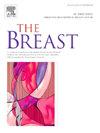使用机器学习模型优化复发风险/Prosigna测试指南:瑞典多中心研究
IF 7.9
2区 医学
Q1 OBSTETRICS & GYNECOLOGY
引用次数: 0
摘要
目的:基因表达谱用于激素受体阳性、HER2阴性(HR+/HER2-)乳腺癌的辅助治疗决策。虽然RS/Oncotype Dx的优化测试算法已经存在,但ROR/Prosigna的优化测试算法还没有得到关注。本研究旨在利用机器学习加强患者的预选。方法:我们纳入了348名绝经后的HR+/ her2淋巴结阴性乳腺癌患者,他们在瑞典的四个地区接受了ROR/Prosigna检测。我们开发了一个机器学习模型,使用简单的预后因素(大小、孕激素受体表达、分级和Ki67)来预测ROR/Prosigna输出,并将过度和不足治疗的表现与常用的风险分层方案进行比较。结果以往的分类导致明显的治疗不足或需要基因表达谱分析的大中间组。根据ROR/Prosigna预测辅助化疗适应症,机器学习模型在训练和验证队列的ROC下的AUC分别为0.77和0.83。通过设置和验证低、中、高风险疾病对应的上限和下限,与目前的风险分层相比,我们提高了风险分层的准确性,降低了需要ROR/Prosigna检测的患者比例。结论机器学习算法可以增强基因表达谱的患者选择,但需要进一步的外部验证。本文章由计算机程序翻译,如有差异,请以英文原文为准。
Optimization of guidelines for Risk Of Recurrence/Prosigna testing using a machine learning model: a Swedish multicenter study
Purpose
Gene expression profiles are used for decision making in the adjuvant setting in hormone receptor-positive, HER2-negative (HR+/HER2-) breast cancer. While algorithms to optimize testing exist for RS/Oncotype Dx, no such efforts have focused on ROR/Prosigna. This study aims to enhance pre-selection of patients for testing using machine learning.
Methods
We included 348 postmenopausal women with resected HR+/HER2-node-negative breast cancer tested with ROR/Prosigna across four Swedish regions. We developed a machine learning model using simple prognostic factors (size, progesterone receptor expression, grade, and Ki67) to predict ROR/Prosigna output and compared the performance regarding over- and undertreatment with commonly employed risk stratification schemes.
Results
Previous classifications resulted in significant undertreatment or large intermediate groups needing gene expression profiling. The machine learning model achieved AUC under ROC of 0.77 in training and 0.83 in validation cohorts for prediction of indication for adjuvant chemotherapy according to ROR/Prosigna. By setting and validating upper and lower cut-offs corresponding to low, intermediate and high-risk disease, we improved risk stratification accuracy and reduced the proportion of patients needing ROR/Prosigna testing compared to current risk stratification.
Conclusion
Machine learning algorithms can enhance patient selection for gene expression profiling, though further external validation is needed.
求助全文
通过发布文献求助,成功后即可免费获取论文全文。
去求助
来源期刊

Breast
医学-妇产科学
CiteScore
8.70
自引率
2.60%
发文量
165
审稿时长
59 days
期刊介绍:
The Breast is an international, multidisciplinary journal for researchers and clinicians, which focuses on translational and clinical research for the advancement of breast cancer prevention, diagnosis and treatment of all stages.
 求助内容:
求助内容: 应助结果提醒方式:
应助结果提醒方式:


